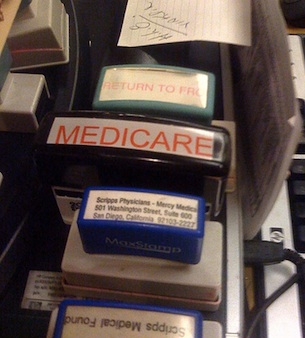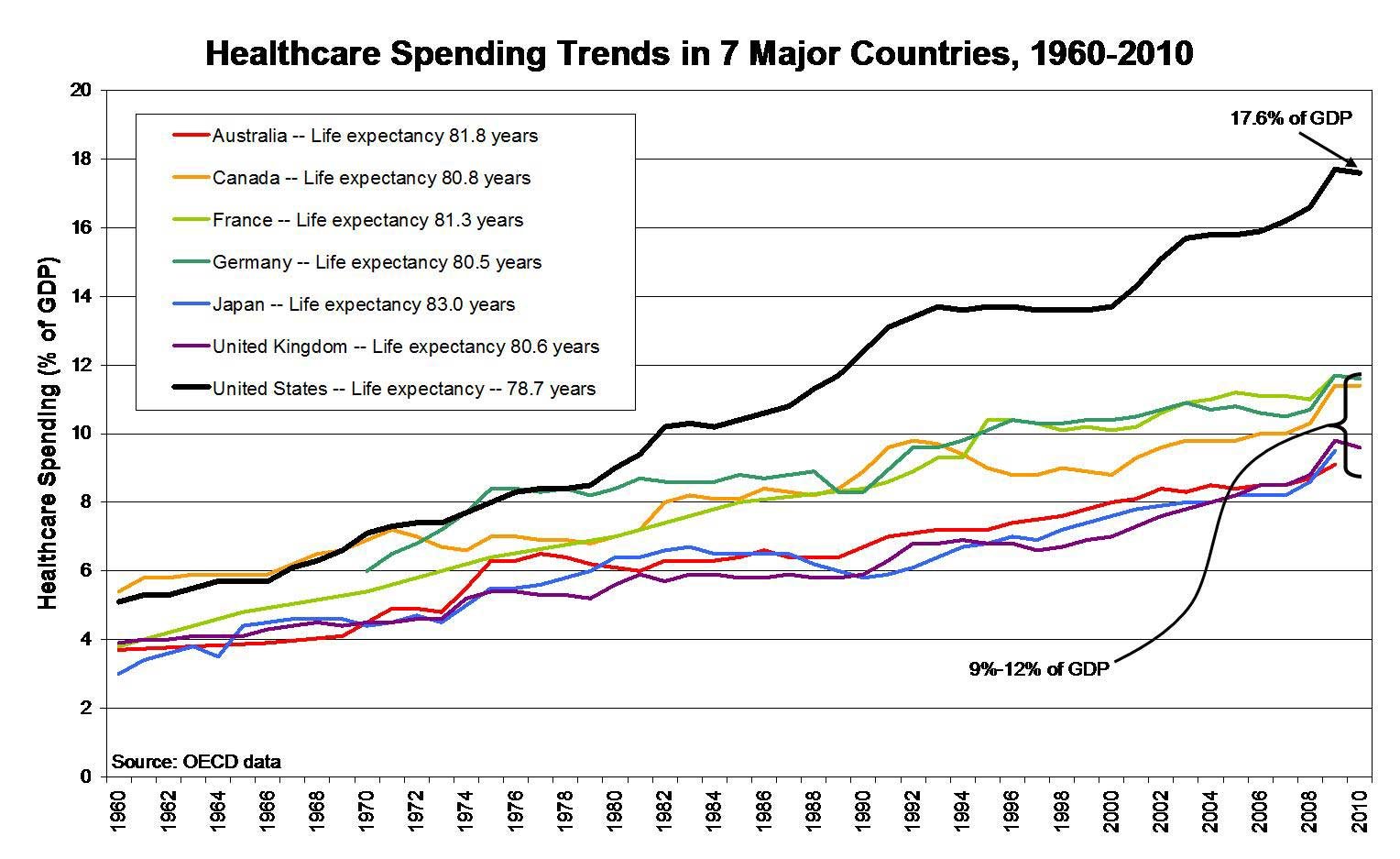Part of the Series
Fighting for Our Lives: The Movement for Medicare for All
Medicare is broken. Medicare spending is out of control. Medicare will go bankrupt in 2024. If we don’t act soon, Medicare will bankrupt the entire country.
Wrong, wrong, wrong and wrong.
The whole US health care system is broken, but Medicare isn’t what broke it. Medicare is the glue that holds it together. Without Medicare, the whole system would have collapsed long ago.
To read more articles by Salvatore Babones and other authors in the Public Intellectual Project, click here.
Most people understand Medicare as an insurance system for seniors. You turn 65, you get Medicare. Without Medicare, millions of senior citizens wouldn’t be able to afford health insurance.
In reality, Medicare is an insurance program for hospitals. Hospitals can’t legally or ethically refuse to treat dying patients. And the simple fact is that most people who are dying are old.
Medicare ensures that hospitals get paid for caring for elderly patients who may have no income and no assets. It’s hard to collect a bill from a senior citizen in a nursing home. It’s even harder to collect a bill from a person who’s died.
Of course, not all sick and dying people are elderly, but by the 1970s, hospitals didn’t have to worry much about unpaid bills. Most male workers had employer-provided health insurance. Their wives and children were covered under those policies. Poor single mothers were covered by Medicaid. The elderly were covered by Medicare.
In other words, by the 1970s, the United States came very close to having universal health insurance. Statistics are not available for the period, but it is likely that over 90 percent of the population was insured, one way or another. Some people still fell through the cracks in the system, but not enough to bankrupt the hospitals.
What’s more, insurance then was much more inclusive than insurance is now. People didn’t face the high deductibles and large co-pays they do today. You got sick, you went to the doctor. For most people, it was that easy.
The result of near-universal health insurance was that by the 1970s, the United States had an efficient, low-cost health care system. Costs were rising, true, but service standards were also rising. In health care, as in everything else, you get what you pay for.
In fact, it’s as close as you can get to a law in economics that health care costs have to rise faster than inflation. As agriculture and manufacturing become ever more productive, the prices of food and manufactured goods fall behind inflation. Inflation measures the average price. So arithmetically, the price of something else has to rise faster than inflation.
That something else is health care.
As countries become richer, they spend more and more of their national incomes on health care. This is true of all countries, not just the United States. The accompanying graphic uses data from the Organization for Economic Cooperation and Development (OECD) to illustrate the proportion of national income (GDP) spent on health care in seven major countries over the past 50 years. It has consistently risen in every single one.
The problem is that health care spending has risen much faster in the United States than in any other country.
Between 1960 and 1980, the US had a normal level of health care spending compared to other countries. It’s only after 1980 that US healthcare costs started to spiral out of control. By the year 2010, the United States was spending 17.8 percent of its national income on health care. Other countries spend between 9 percent and 12 percent.
The difference? In the United States, most people continued to be covered by private insurance, when they were covered at all. In every other major country, government health care systems expanded to cover all citizens. The other countries have a wide range of arrangements for providing health care, but they all share one thing in common: universal coverage.
Not coincidentally, back in the 1970s when the United States had similar coverage rates to other countries, it had similar levels of life expectancy. We ranked fourth out of seven. Today, we rank seventh out of seven. We pay more, and we get less.
If the United States were able to reduce its health care spending from 17.8 percent of national income to a more normal 11.8 percent of national income, we would be spending $905 billion less on health care every year. Obamacare won’t do that. Neither will the Medicare “reform” proposals currently under consideration.
Only one policy proposal would bring the US healthcare system into line with those in other countries: Medicare for all.
Raising the age for Medicare eligibility won’t reduce costs. As Wall Street Journal columnist Rex Nutting points out, booting 65- and 66-year -olds off Medicare will raise costs by transferring them from cheap public insurance to expensive private insurance – if they get insurance at all.
Slate columnist Matthew Yglesias has run the numbers and concluded that instead of raising the Medicare eligibility age, we should lower it “all the way down to zero.” In other words, we should bring back the public option that was supposed to be the centerpiece of Obamacare, before Obama traded it away for nonexistent bipartisan support.
Another bad policy idea is means-testing Medicare. That would mean making rich seniors pay more for their own insurance. Many Democrats support this option, including President Obama, though Reps. Nancy Pelosi (D-California) and Henry Waxman (D-California) have come out against.
In principle, it sounds progressive to make rich people pay more for insurance. But that’s not what means-testing really means. What it really means is encouraging richer people to opt out of Medicare and buy private insurance instead. It’s the next-best (worst) thing to Paul Ryan’s voucher proposal for Medicare privatization.
Medicare is an incredibly complicated program. Like any government program, it would benefit from updates and tweaks to keep it in line with current research and best practice. But it is universal, efficient and effective. Under current law, its main hospital insurance program is fully self-funded until 2024, after which it may – or may not – need a government subsidy. That doesn’t sound much like a crisis.
Medicare needs saving – but not from runaway costs. The leaderships of both political parties seem intent on raiding Medicare to pay for tax cuts. Business interests want to dismantle Medicare to create more opportunities for private profit. And of course, the entire health care industry wants higher payments from Medicare for its services.
In the end, what we really need is more Medicare, not less. Every other rich country has universal government-supported (not individual-mandate) health care; every other rich country has dramatically lower health care costs; and every other rich country has higher life expectancy.
We should have had Medicare for all when Harry Truman first proposed it in 1945. We should have had it when Medicare for seniors was passed into law in 1965. We should have it today.
Our most important fundraising appeal of the year
December is the most critical time of year for Truthout, because our nonprofit news is funded almost entirely by individual donations from readers like you. So before you navigate away, we ask that you take just a second to support Truthout with a tax-deductible donation.
This year is a little different. We are up against a far-reaching, wide-scale attack on press freedom coming from the Trump administration. 2025 was a year of frightening censorship, news industry corporate consolidation, and worsening financial conditions for progressive nonprofits across the board.
We can only resist Trump’s agenda by cultivating a strong base of support. The right-wing mediasphere is funded comfortably by billionaire owners and venture capitalist philanthropists. At Truthout, we have you.
We’ve set an ambitious target for our year-end campaign — a goal of $250,000 to keep up our fight against authoritarianism in 2026. Please take a meaningful action in this fight: make a one-time or monthly donation to Truthout before December 31. If you have the means, please dig deep.

